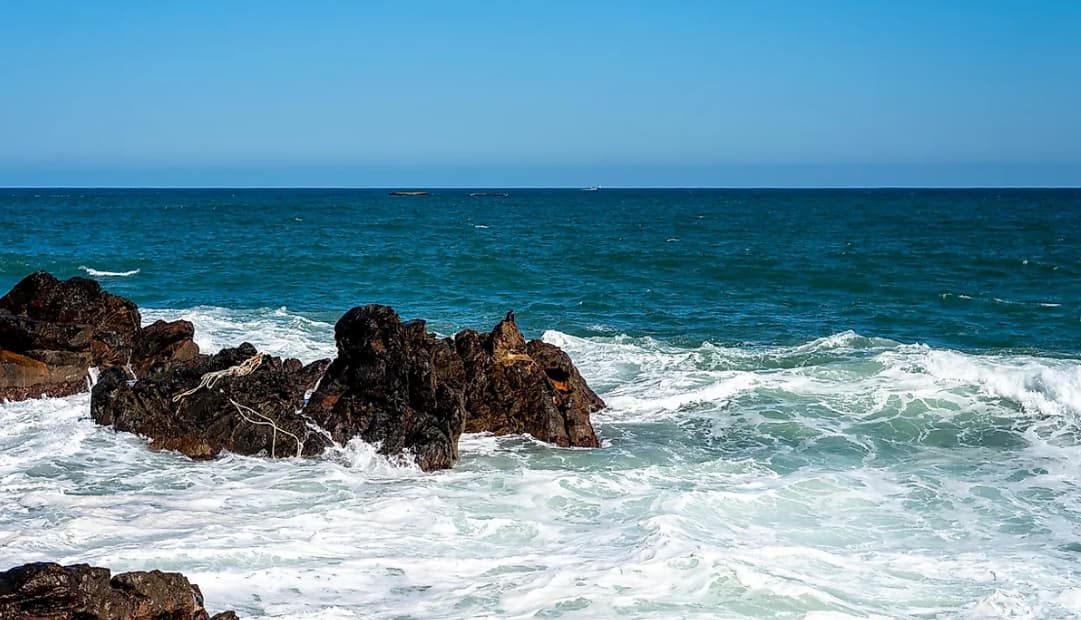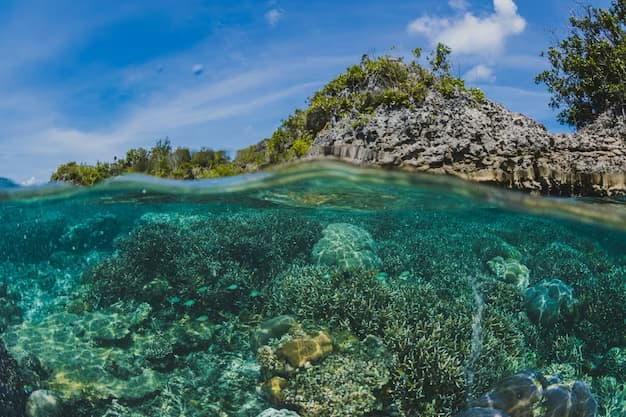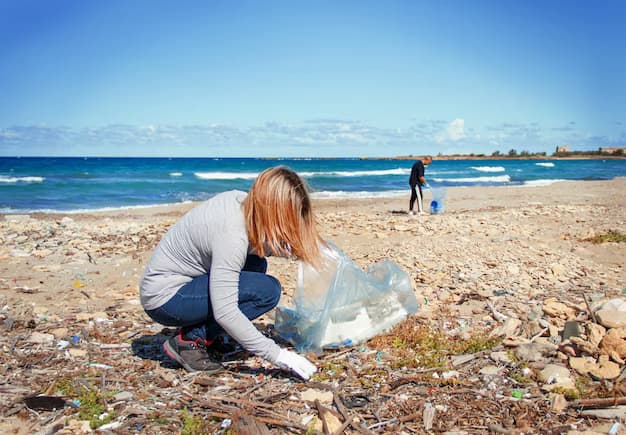The Sea of Japan is not only a vital ecological and economic asset but also holds deep cultural and historical significance for the countries that border it. For centuries, it has been a crossroads of civilizations, facilitating cultural exchange and trade between Japan, Korea, Russia, and China. The sea has witnessed numerous historical events, from the spread of Buddhism to the conflicts and cooperation that have shaped the modern identities of these nations. Its waters and islands have inspired countless works of art, literature, and folklore, embedding it deeply in the cultural heritage of the region.
Environmental Challenges and Conservation Efforts: How Deep Is the Sea of Japan?
Amidst its beauty and bounty, the Sea of Japan faces significant environmental threats. Pollution, particularly from industrial waste, agricultural runoff, and maritime activities, has degraded water quality and threatened marine life. In some areas, toxic algal blooms, a direct consequence of nutrient runoff, have disrupted the marine ecosystem, leading to fish kills and loss of biodiversity. Efforts to combat these challenges have led to collaborative international projects aimed at reducing pollution and restoring marine habitats.
Overfishing remains a critical concern, with several species being harvested at unsustainable rates. Initiatives to promote sustainable fishing practices have gained momentum, emphasizing quota systems, bycatch reduction, and the protection of spawning grounds. Moreover, climate change poses an existential threat to the sea’s delicate balance, altering water temperatures and affecting the distribution of marine species. Conservation efforts are increasingly focusing on building resilience in marine ecosystems to withstand these changes.
The Role of Technology and Research in Understanding the Sea of Japan
The integration of cutting-edge technologies and collaborative research initiatives has significantly expanded our understanding and capacity to safeguard the Sea of Japan. Here are key areas where progress is most evident:
- Satellite Monitoring: This technology has revolutionized the way we observe and analyze the sea’s surface temperature, ice cover, and algal blooms. By providing real-time data, satellite imagery helps monitor environmental changes, track pollution, and manage marine resources more effectively;
- Deep-Sea Exploration: Submersibles and remotely operated vehicles (ROVs) have allowed scientists to explore the deepest recesses of the Sea of Japan, discovering new species and underwater habitats. These missions contribute to our understanding of deep-sea ecosystems and their roles in the global marine environment;
- Advanced Modeling Techniques: Computer models simulate the sea’s physical, chemical, and biological processes, offering predictions about climate change impacts, ocean circulation, and ecosystem dynamics. These tools are invaluable for planning conservation efforts and understanding the complex interactions within marine ecosystems;
- Collaborative International Research: Partnerships among nations bordering the Sea of Japan have led to comprehensive studies on its biodiversity, pollution, and the effects of climate change. Such collaborations ensure a holistic approach to addressing the sea’s environmental challenges, emphasizing shared responsibilities and benefits;
- Innovative Conservation Strategies: From artificial reef construction to the establishment of marine protected areas (MPAs), innovative approaches are being implemented to preserve biodiversity and promote sustainable use of marine resources. These strategies are informed by the latest research findings and are crucial for the long-term health of the Sea of Japan’s ecosystems.
By leveraging these advancements, stakeholders can devise more effective strategies for managing the Sea of Japan, ensuring its resilience against the backdrop of global environmental challenges. The ongoing commitment to research and technology underscores the collective effort to protect this vital marine habitat for future generations.
The Path Forward: How Deep Is the Sea of Japan?
Looking ahead, the future of the Sea of Japan hinges on sustainable practices and international cooperation. The challenges it faces are complex and interconnected, transcending national boundaries and requiring a unified approach. The Joint Declaration on the Advancement of the East Asian Seas is a step in the right direction, but more concerted efforts are needed to address the multifaceted issues at hand.
Engagement with local communities, the promotion of eco-friendly tourism, and investment in clean energy are among the strategies that can foster economic development while preserving the sea’s natural beauty and resources. Education and awareness-raising are also vital, ensuring that future generations understand the importance of the Sea of Japan and are committed to its protection. In conclusion, the Sea of Japan is a magnificent body of water that holds immense ecological, economic, cultural, and geopolitical importance. Its challenges are significant, but so are the opportunities for collaboration, innovation, and sustainable management. By working together, the countries surrounding the Sea of Japan can ensure that it continues to thrive as a source of life and prosperity for generations to come.
FAQs
Beyond its ecological significance, the Sea of Japan acts as a cultural bridge, enriching the traditions and histories of its bordering nations. The sea’s strategic importance cannot be overstated, serving as a crucial passage for international trade and naval endeavors. This unique position has made it a focal point of diplomatic relations and military strategy throughout history. The complexity of its geopolitical significance is further amplified by the ongoing naming dispute, a symbol of deeper historical and territorial tensions. Moreover, the sea’s environmental issues highlight the urgent need for international collaboration in addressing marine pollution and advocating for sustainable fishing practices, making it a living example of the challenges and opportunities facing our global oceans today.
The depth of the Sea of Japan contributes to its mysterious allure, with its deepest points harboring unique marine life and ecosystems largely untouched by human activity. These depths play a critical role in the sea’s biodiversity, offering a refuge for deep-sea creatures and serving as crucial corridors for migratory species. The variation in depth also affects the sea’s currents and temperature gradients, influencing the climate of the surrounding regions and the distribution of marine life. Understanding these depths is key to grasping the sea’s ecological dynamics and its influence on the regional climate, making it a subject of ongoing scientific exploration.
The expansive size of the Sea of Japan makes it a significant ecological and geopolitical entity, influencing weather patterns and marine biodiversity across a vast area. Its size facilitates a variety of marine environments, from coastal ecosystems to deep-sea habitats, each supporting a rich diversity of life. This vast maritime landscape also plays a crucial role in the economies of the surrounding countries, providing routes for shipping and avenues for resource exploration. The sheer scale of the Sea of Japan underscores its importance as a natural resource and as a key area for environmental conservation efforts, reflecting the need to balance human activity with the preservation of natural habitats.
While the Sea of Japan is generally safe for swimming, its diverse conditions across different regions offer a variety of experiences for beachgoers and marine enthusiasts. From tranquil bays perfect for family outings to more challenging waters that appeal to adventurous swimmers and surfers, the sea caters to all levels of water sports enthusiasts. Local efforts to monitor water quality and ensure safety measures are in place contribute to making the Sea of Japan a desirable destination for recreational activities. However, the presence of jellyfish and other marine life during certain seasons can pose risks, highlighting the importance of heeding local advisories and respecting the sea’s natural inhabitants for a safe and enjoyable experience.



